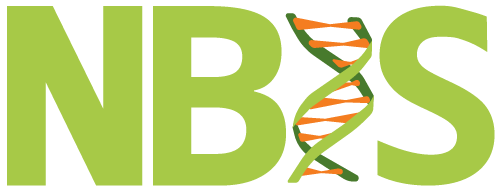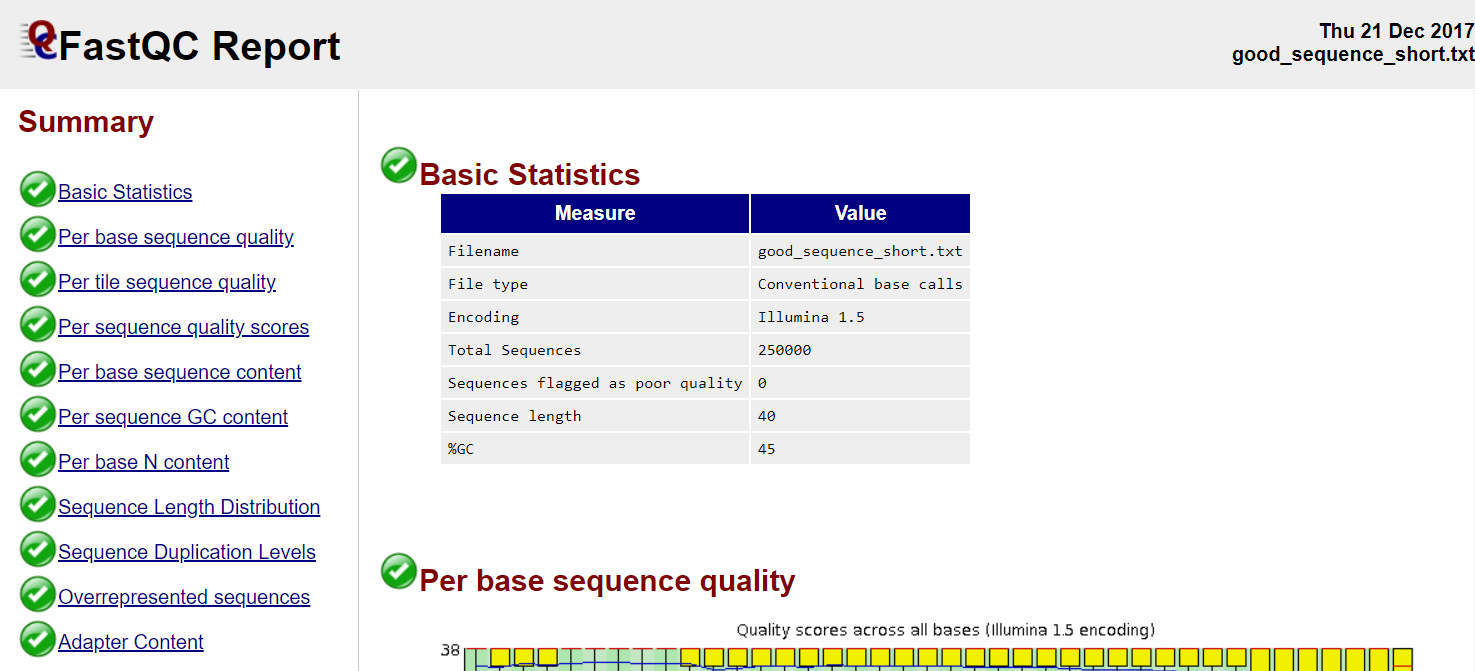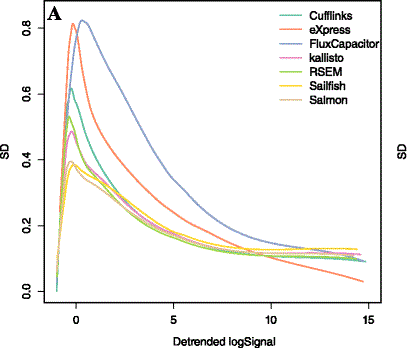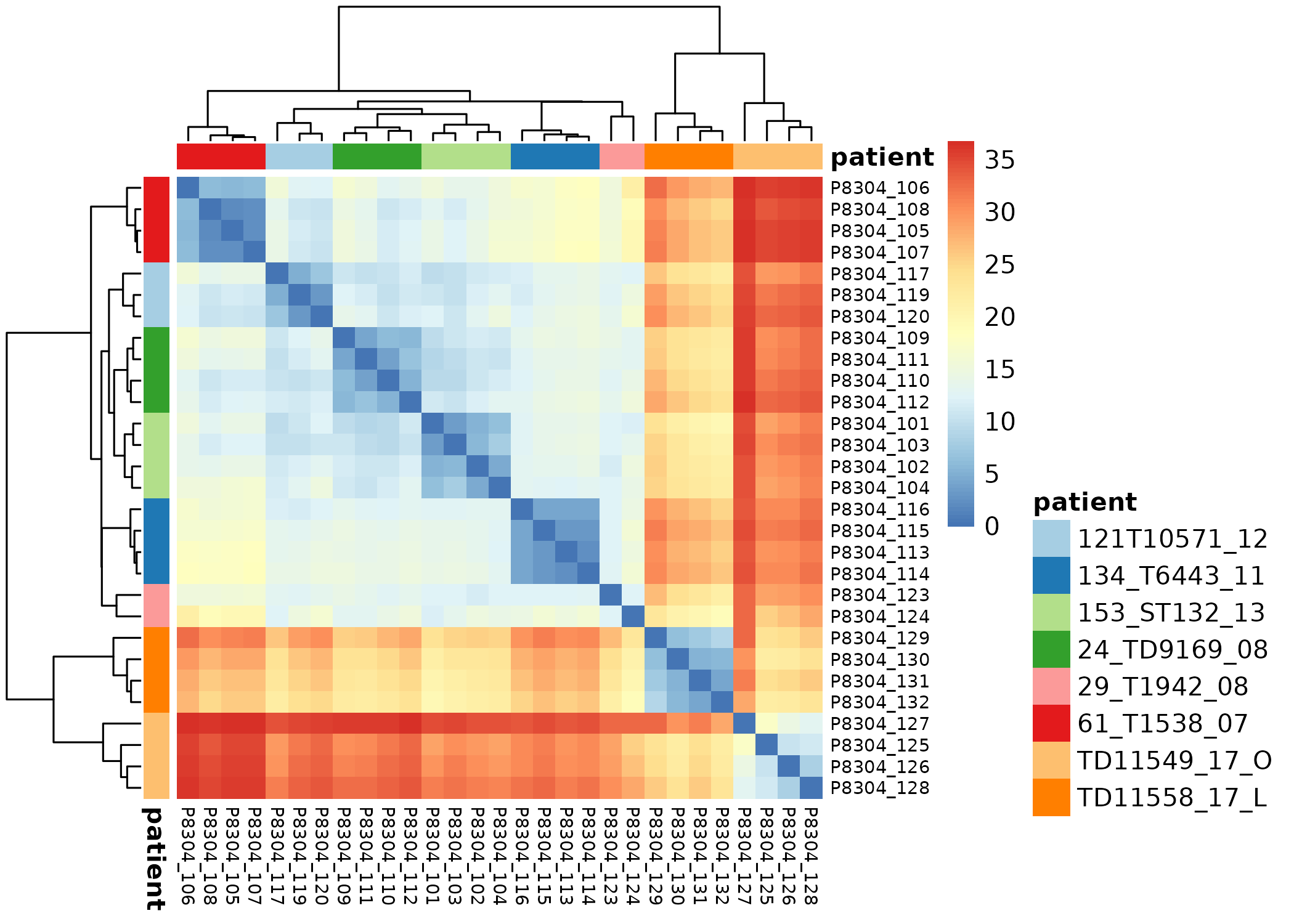Bulk RNASeq Analysis
16-Nov-2023
What is RNA?
- The transcriptome is spatially and temporally dynamic
- Data comes from functional units (coding regions)
- Only a tiny fraction of the genome
Applications
- Identify gene sequences in genomes (annotation)
- Learn about gene function
- Differential gene expression
- Explore isoform and allelic expression
- Understand co-expression, pathways and networks
- Gene fusion
- RNA editing
Workflow
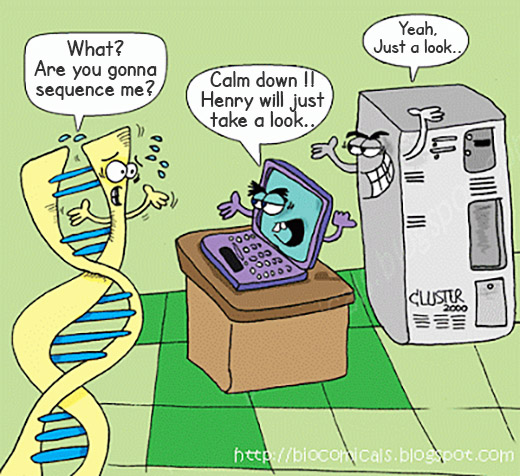
Conesa et al. (2016)
De-Novo assembly
- When no reference genome available
- To identify novel genes/transcripts/isoforms
- Identify fusion genes
- Assemble transcriptome from short reads
- Access quality of assembly and refine
- Map reads back to assembled transcriptome
Experimental design
- Biological replicates: 6 - 12 Schurch et al. (2016)
- Sample size estimation Hart et al. (2013)
- Power analysis Zhao et al. (2018) RNASeqPower web app
- Balanced design to avoid batch effects
- RIN values have strong effect Gallego Romero et al. (2014)
Library & Sequencing
- polyA selection / Ribosomal RNA depletion
- Single-end / Paired-end
Library prep
- 80% of the RNA in a cell is ribosomal RNA (rRNA)
- rRNA can be eliminated using polyA selection or rRNA depletion
- PolyA selection mostly captures only protein-coding genes / mRNA but gives cleaner results
- Depletion of rRNA is the solution if it’s important to retain all RNA species
- smallRNAs are purified through size selection
- PCR amplification may be needed for low quantity input (See section PCR duplicates)
- Almost always use stranded (directional) libraries Zhao et al. (2015), Levin et al. (2010)
- Accurately identify sense/antisense transcript
- Resolve overlapping genes
- Exome capture
- Library normalisation to concentrate specific transcripts
- Libraries should have high complexity / low duplication. Daley & Smith (2013)
Sequencing
- Short reads vs long reads (Illumina/PacBio)
- Read length Chhangawala et al. (2015)
- Greater than 50bp does not improve DGE
- Longer reads better for isoforms
- Pooling samples
- Sequencing depth (Coverage / Reads per sample)
- Single-end reads (Cheaper?)
- Almost always use paired-end reads
- Increased mappable reads
- Increased power in assemblies
- Better for structural variation and isoforms
- Decreased false-positives for DGE
- More replicates are better than more depth Liu et al. (2014)
Corley et al. (2017)
Workflow • DGE
Read QC
- Number of reads
- Per base sequence quality
- Per sequence quality score
- Per base sequence content
- Per sequence GC content
- Per base N content
- Sequence length distribution
- Sequence duplication levels
- Overrepresented sequences
- Adapter content
- Kmer content

https://sequencing.qcfail.com/

FastQC
Read QC • PBSQ, PSQS
Per base sequence quality
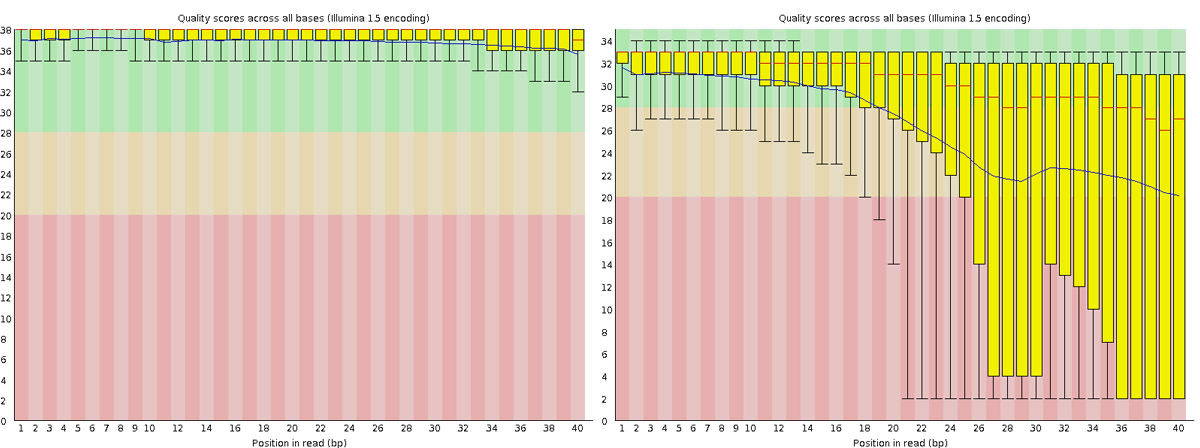
Per sequence quality scores
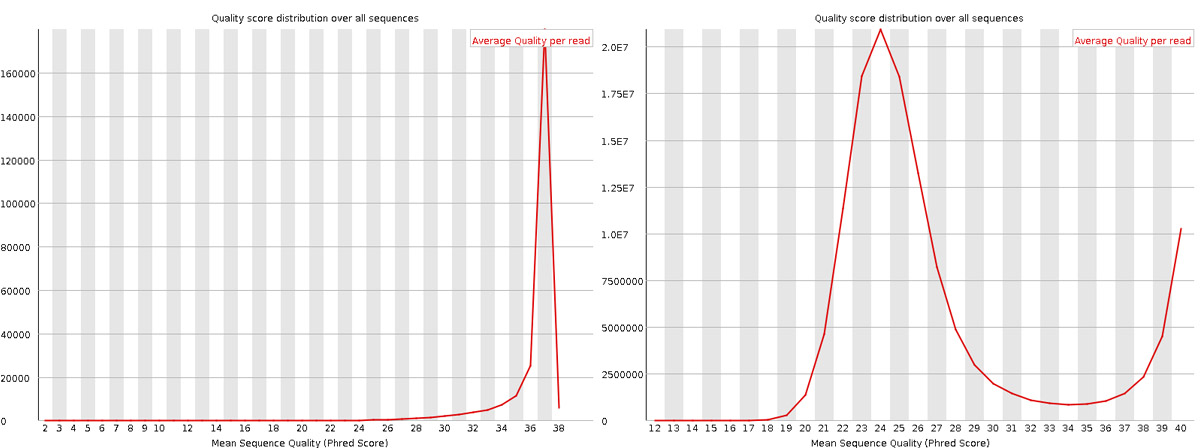
Trimming
- Trimming reads to remove adapter/readthrough or low quality bases
- Related options are hard clipping, filtering reads
- Sliding window trimming
- Filter by min/max read length
- Remove reads less than ~18nt
- Demultiplexing/Splitting
When to avoid trimming?
- Read trimming may not always be necessary Liao & Shi (2020)
- Fixed read length may sometimes be more important
- Expected insert size distribution may be more important for assemblers
Mapping
- Aligning reads back to a reference sequence
- Mapping to genome vs transcriptome
- Splice-aware alignment (genome) (STAR, HISAT2 etc)
Aligners • Metrics
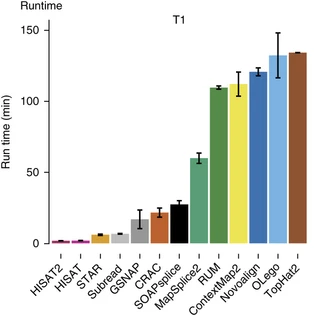
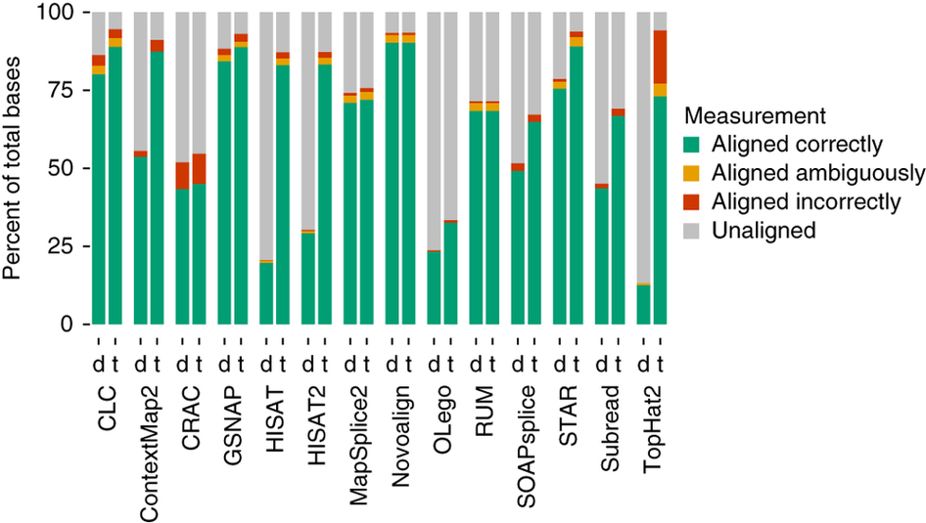
Baruzzo et al. (2017)
Aligners time and RAM
| Program | Time_Min | Memory_GB |
|---|---|---|
| HISATx1 | 22.7 | 4.3 |
| HISATx2 | 47.7 | 4.3 |
| HISAT | 26.7 | 4.3 |
| STAR | 25 | 28 |
| STARx2 | 50.5 | 28 |
| GSNAP | 291.9 | 20.2 |
| TopHat2 | 1170 | 4.3 |
Mapping
- Reads (FASTQ)
@ST-E00274:179:HHYMLALXX:8:1101:1641:1309 1:N:0:NGATGT
NCATCGTGGTATTTGCACATCTTTTCTTATCAAATAAAAAGTTTAACCTACTCAGTTATGCGCATACGTTTTTTGATGGCATTTCCATAAACCGATTTTTTTTTTATGCACGTACCCAAAACGTGCAGAAAAATACGCTGCTAGAAATGTA
+
#AAAFAFA<-AFFJJJAFA-FFJJJJFFFAJJJJ-<FFJJJ-A-F-7--FA7F7-----FFFJFA<FFFFJ<AJ--FF-A<A-<JJ-7-7-<FF-FFFJAFFAA--A--7FJ-7----77-A--7F7)---7F-A----7)7-----7<<-@instrument:runid:flowcellid:lane:tile:xpos:ypos read:isfiltered:controlnumber:sampleid
- Reference Genome/Transcriptome (FASTA)
>1 dna:chromosome chromosome:GRCz10:1:1:58871917:1 REF
GATCTTAAACATTTATTCCCCCTGCAAACATTTTCAATCATTACATTGTCATTTCCCCTC
CAAATTAAATTTAGCCAGAGGCGCACAACATACGACCTCTAAAAAAGGTGCTGTAACATG- Annotation (GTF/GFF)
#!genome-build GRCz10
#!genebuild-last-updated 2016-11
4 ensembl_havana gene 6732 52059 . - . gene_id "ENSDARG00000104632"; gene_version "2"; gene_name "rerg"; gene_source "ensembl_havana"; gene_biotype "protein_coding"; havana_gene "OTTDARG00000044080"; havana_gene_version "1";seq source feature start end score strand frame attribute
Alignment
- SAM/BAM (Sequence Alignment Map format)
ST-E00274:188:H3JWNCCXY:4:1102:32431:49900 163 1 1 60 8S139M4S = 385 535 TATTTAGAGATCTTAAACATCCATTCCCCCTGCAAACATTTTCAATCATTACATTGTCATTTTCCCTCCAAATTAAATTTAGCCAGAGGCGCACAACATACGACCTCTAAAAAAGGTGCTGGAACATGTACCTATATGCAGCACCACCATC AAAFAFFAFFFFJ7FFFFJ<JAFA7F-<AJ7JJ<FFFJ--<FAJF<7<7FAFJ-<AFA<-JJJ-AF-AJ-FF<F--A<FF<-7777-7JA-77A---F-7AAFF-FJA--77FJ<--77)))7<JJA<J77<-------<7--))7)))7- NM:i:4 MD:Z:12T0T40C58T25 AS:i:119 XS:i:102 XA:Z:17,-53287490,4S33M4D114M,11; MQ:i:60 MC:Z:151M RG:Z:ST-E00274_188_H3JWNCCXY_4query flag ref pos mapq cigar mrnm mpos tlen seq qual opt
Never store alignment files in raw SAM format. Always compress it! SAM format
| Format | Size_GB |
|---|---|
| SAM | 7.4 |
| BAM | 1.9 |
| CRAM lossless Q | 1.4 |
| CRAM 8 bins Q | 0.8 |
| CRAM no Q | 0.26 |
Visualisation • IGV
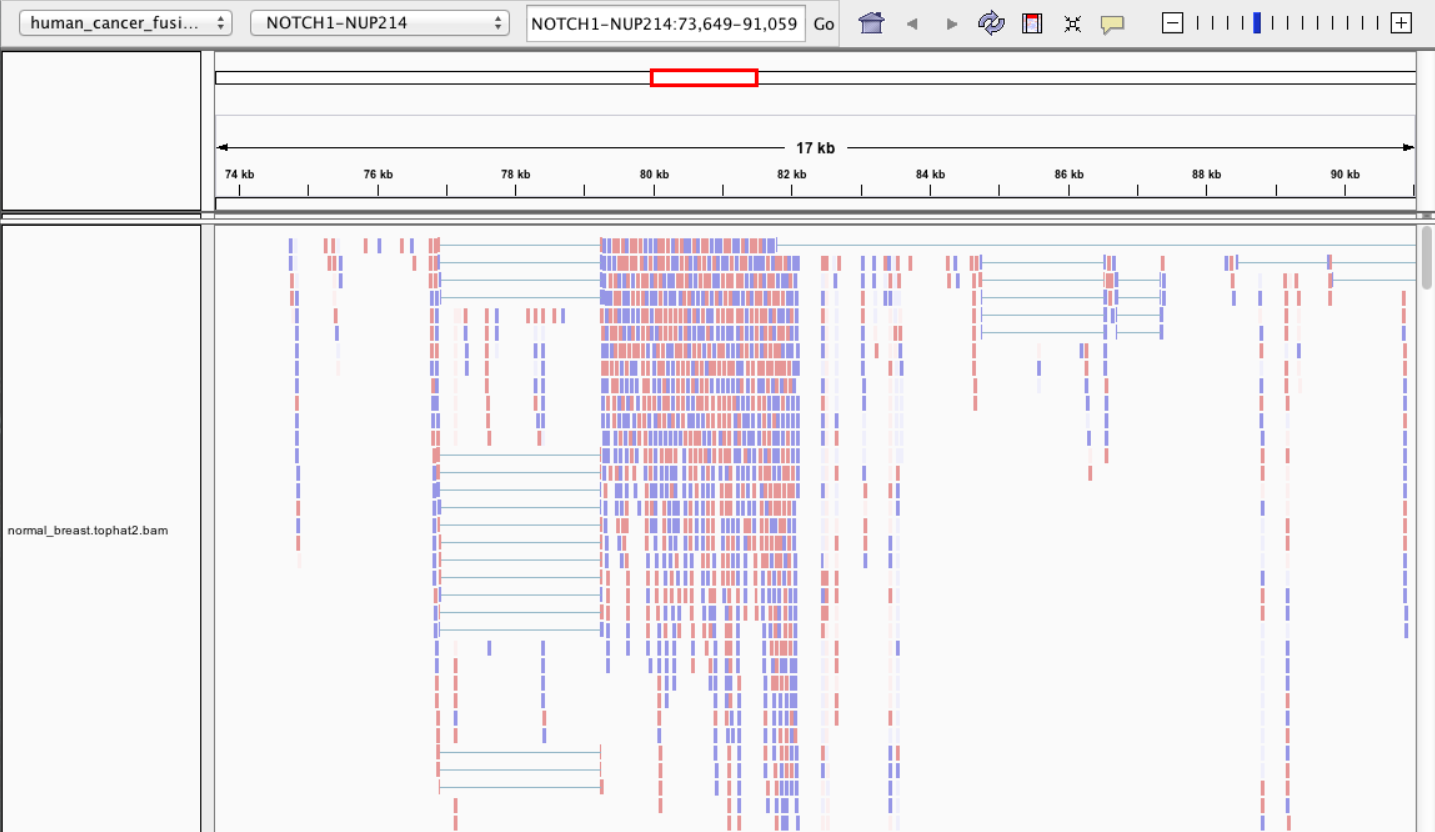
Visualisation • tview
samtools tview alignment.bam genome.fasta
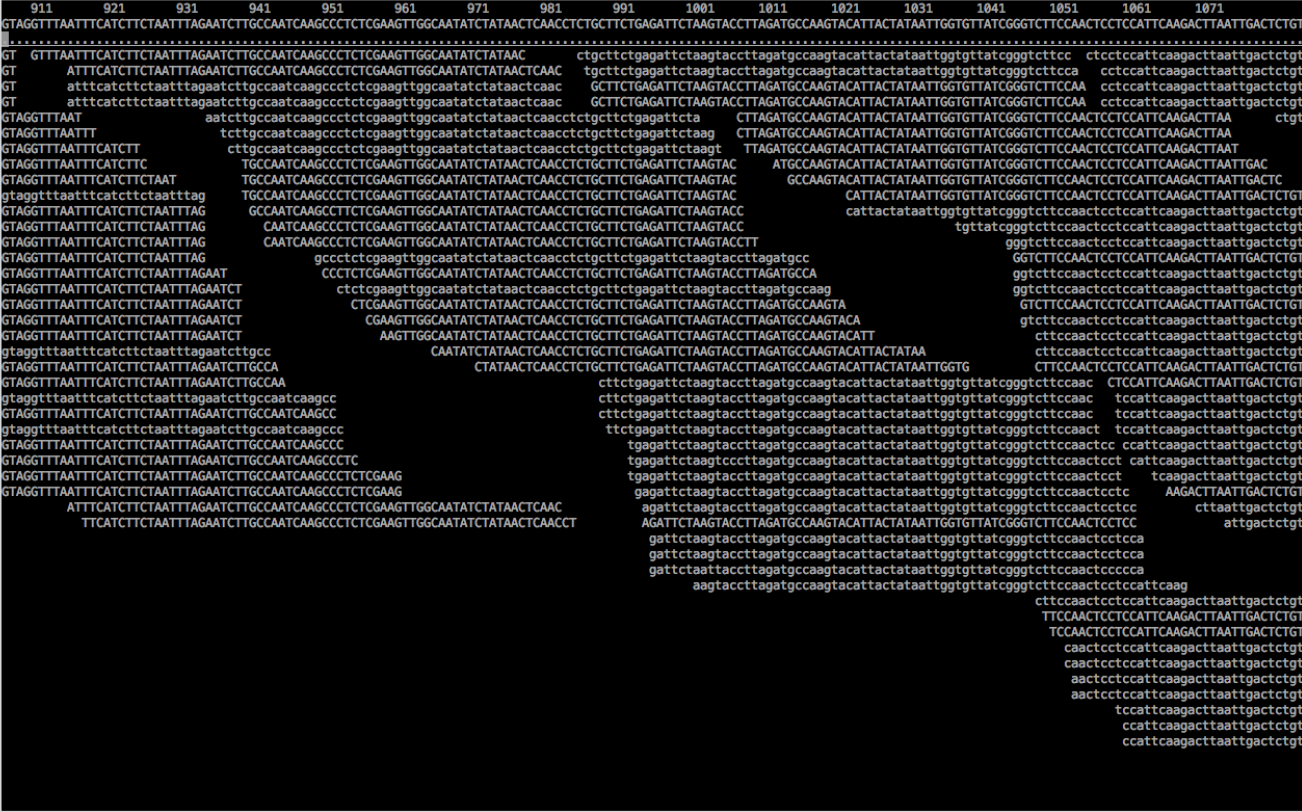
Visualisation • SeqMonk
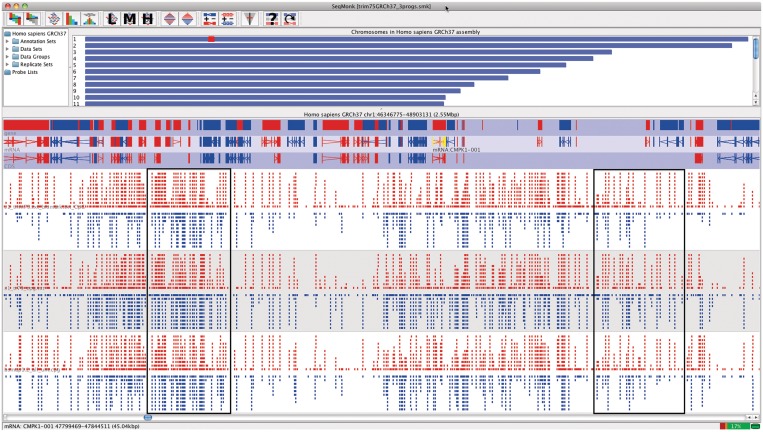
Alignment QC
- Number of reads mapped/unmapped/paired etc
- Uniquely mapped
- Insert size distribution
- Coverage
- Gene body coverage
- Biotype counts / Chromosome counts
- Counts by region: gene/intron/non-genic
- Sequencing saturation
- Strand specificity
STAR (final log file), samtools stats, bamtools stats, QoRTs, RSeQC, Qualimap
Alignment QC • STAR Log
MultiQC can be used to summarise and plot STAR log files.
Alignment QC • Features
QoRTs was run on all samples and summarised using MultiQC.
Alignment QC • QoRTs
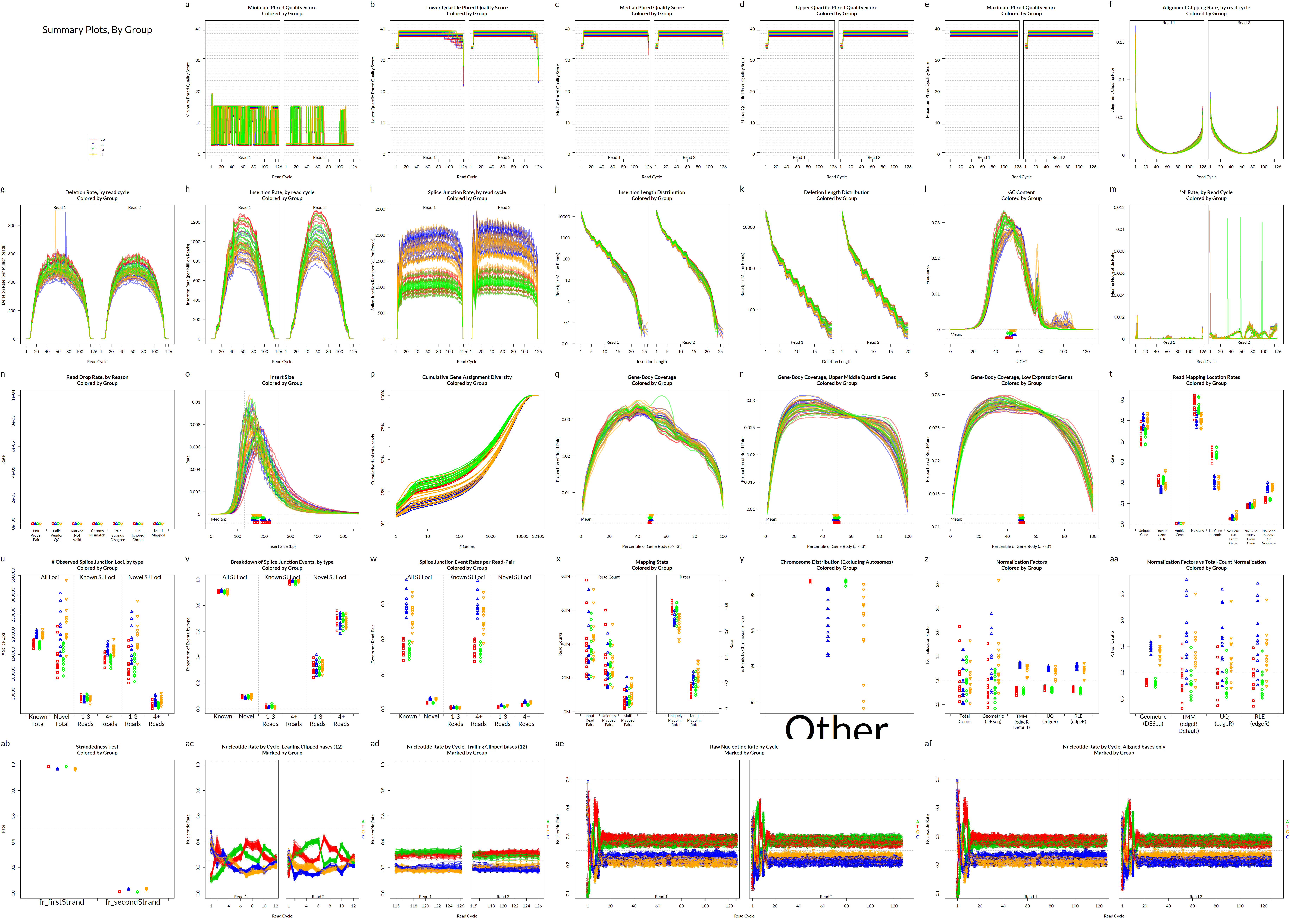
Alignment QC • Examples
Read mapping profile 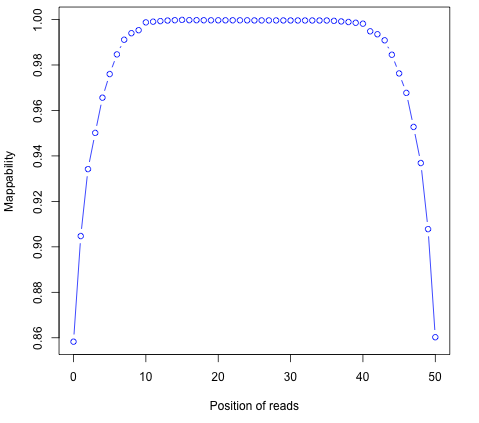
Gene body coverage 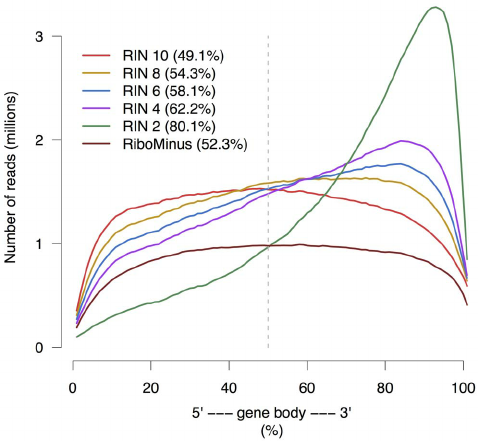
Sigurgeirsson et al. (2014)
Alignment QC • Examples
Insert size
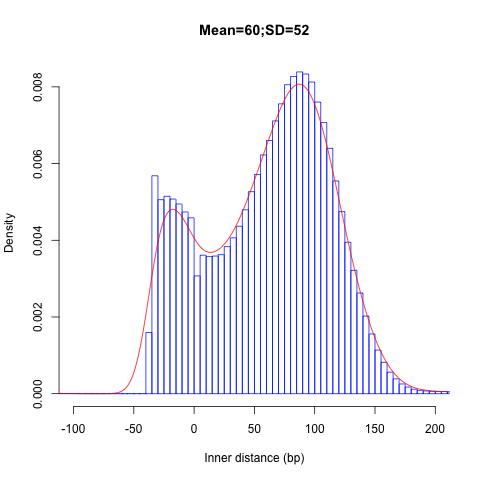
Saturation curve
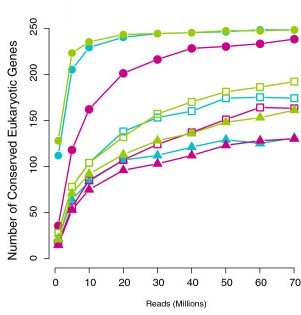
Francis et al. (2013)
Quantification • Counts
- Read counts = gene expression
- Intersection on gene models
- Reads can be quantified on any feature (gene, transcript, exon etc)
Quantification
PCR duplicates
- Computational deduplication not recommended Klepikova et al. (2017), Parekh et al. (2016)
- Use PCR-free library-prep kits
- Use UMIs during library-prep Fu et al. (2018)
Multi-mapping
- Added (BEDTools multicov)
- Discard (featureCounts, HTSeq)
- Distribute counts (Cufflinks, featureCounts)
- Rescue
- Probabilistic assignment (Rcount, Cufflinks)
- Prioritise features (Rcount)
- Probabilistic assignment with EM (RSEM)
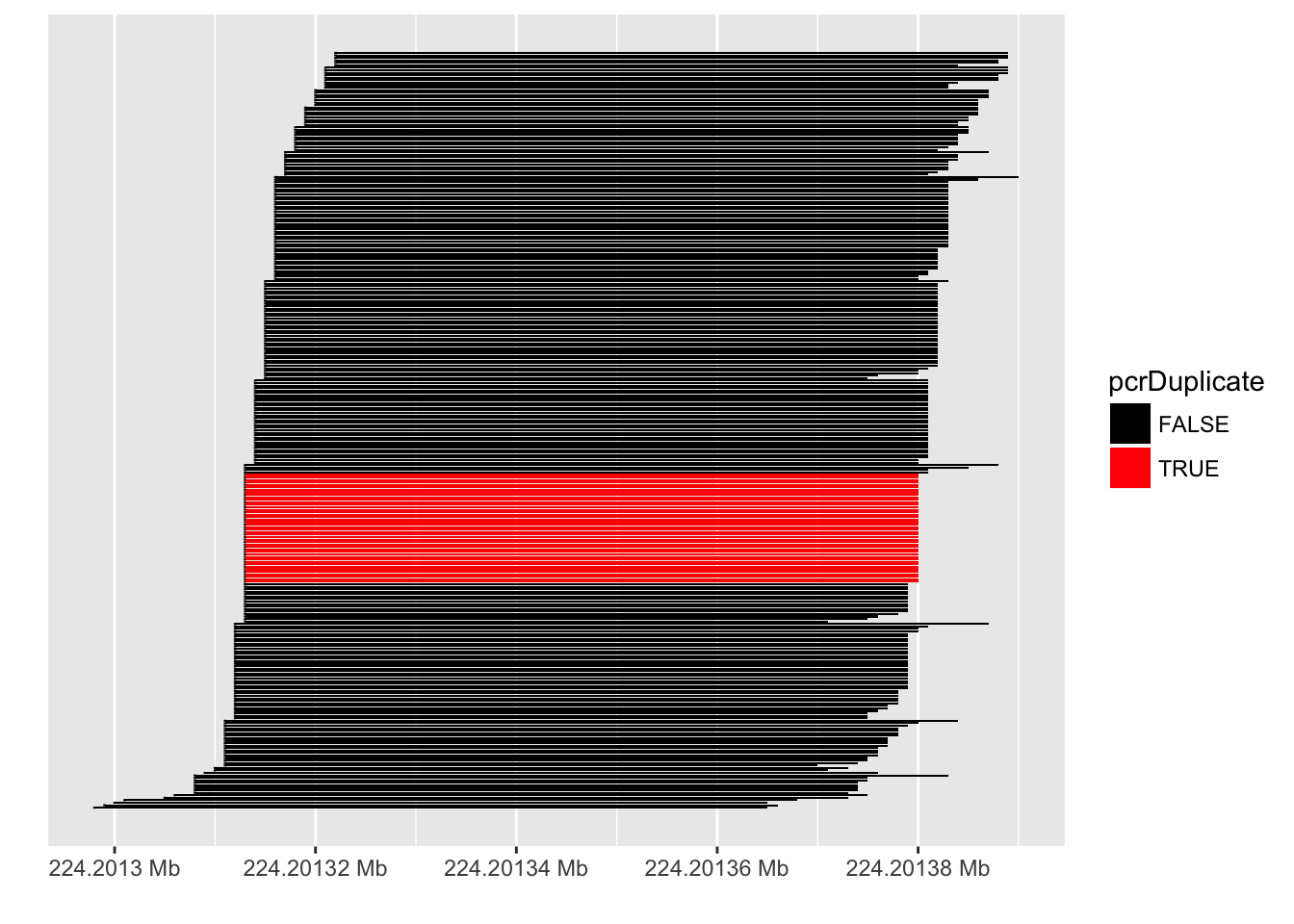
Quantification • Abundance
- Count methods
- Provide no inference on isoforms
- Cannot accurately measure fold change
- Probabilistic assignment
- Deconvolute ambiguous mappings
- Transcript-level
- cDNA reference
Kallisto, Salmon
Quantification QC
ENSG00000000003 140 242 188 143 287 344 438 280 253
ENSG00000000005 0 0 0 0 0 0 0 0 0
ENSG00000000419 69 98 77 55 52 94 116 79 69
ENSG00000000457 56 75 104 79 157 205 183 178 153
ENSG00000000460 33 27 23 19 27 42 69 44 40- Pairwise correlation between samples must be high (>0.9)

MultiQC
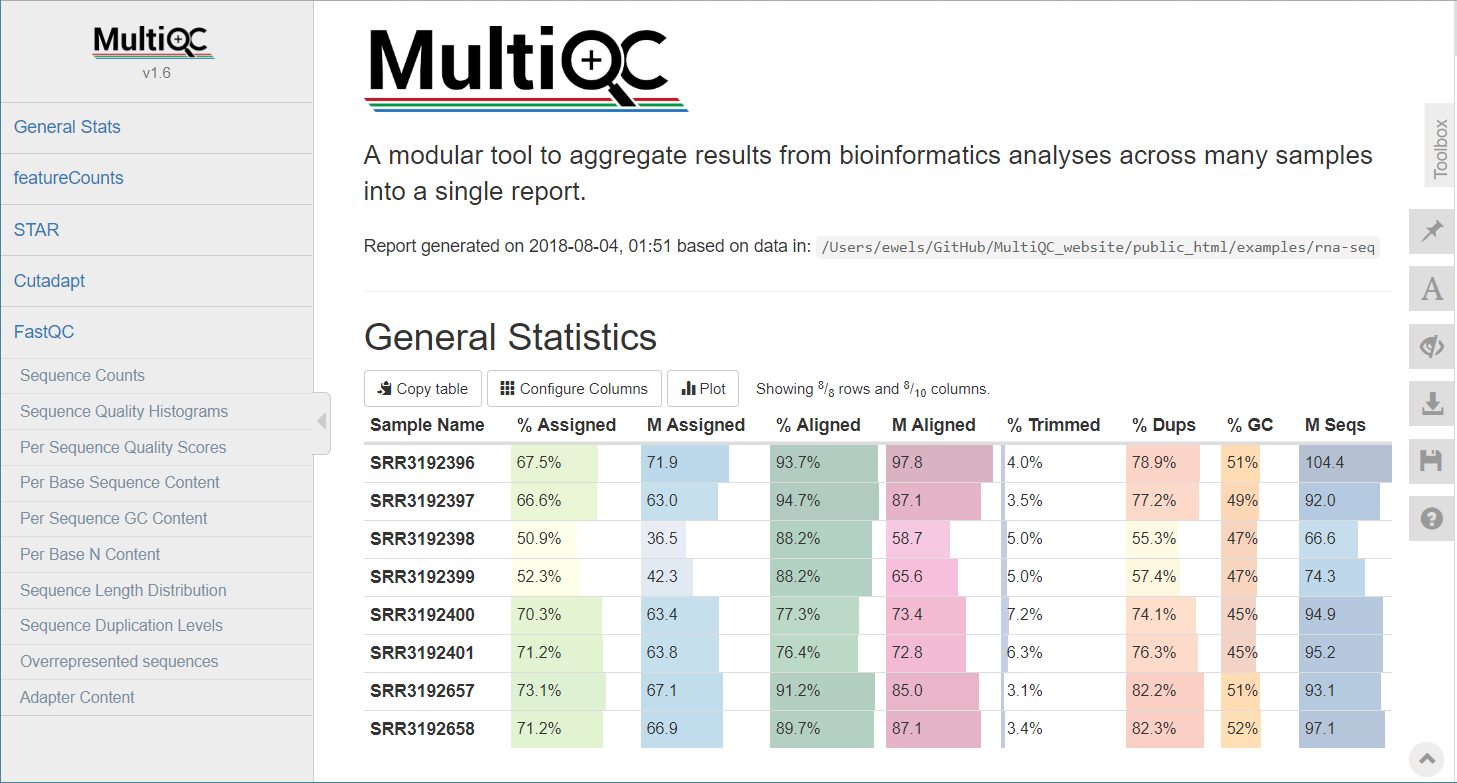
Normalisation
- Control for Sequencing depth, compositional bias and more
- Median of Ratios (DESeq2) and TMM (edgeR) perform the best

- For DGE using DGE packages, use raw counts
- For clustering, heatmaps etc use VST, VOOM or RLOG
- For own analysis, plots etc, use TPM
- Other solutions: spike-ins/house-keeping genes
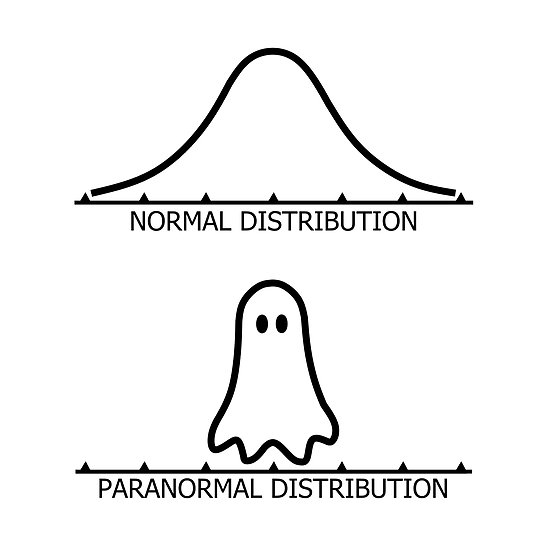
Dillies et al. (2013), Evans et al. (2018), Wagner et al. (2012)
Exploratory
- Transform raw counts to VST, VOOM, RLOG, TPM etc
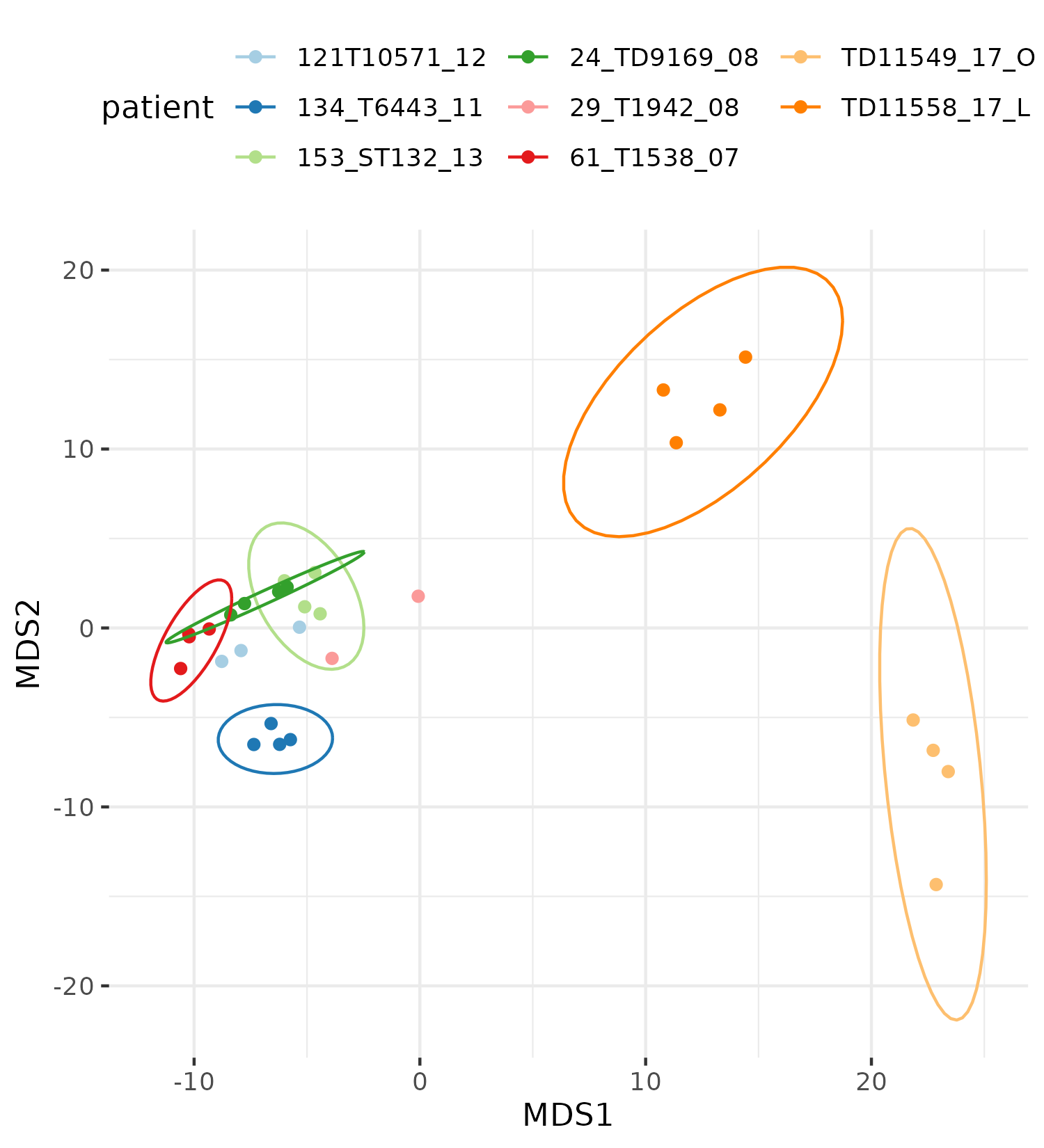
Batch correction
- Estimate variation explained by variables (PVCA)
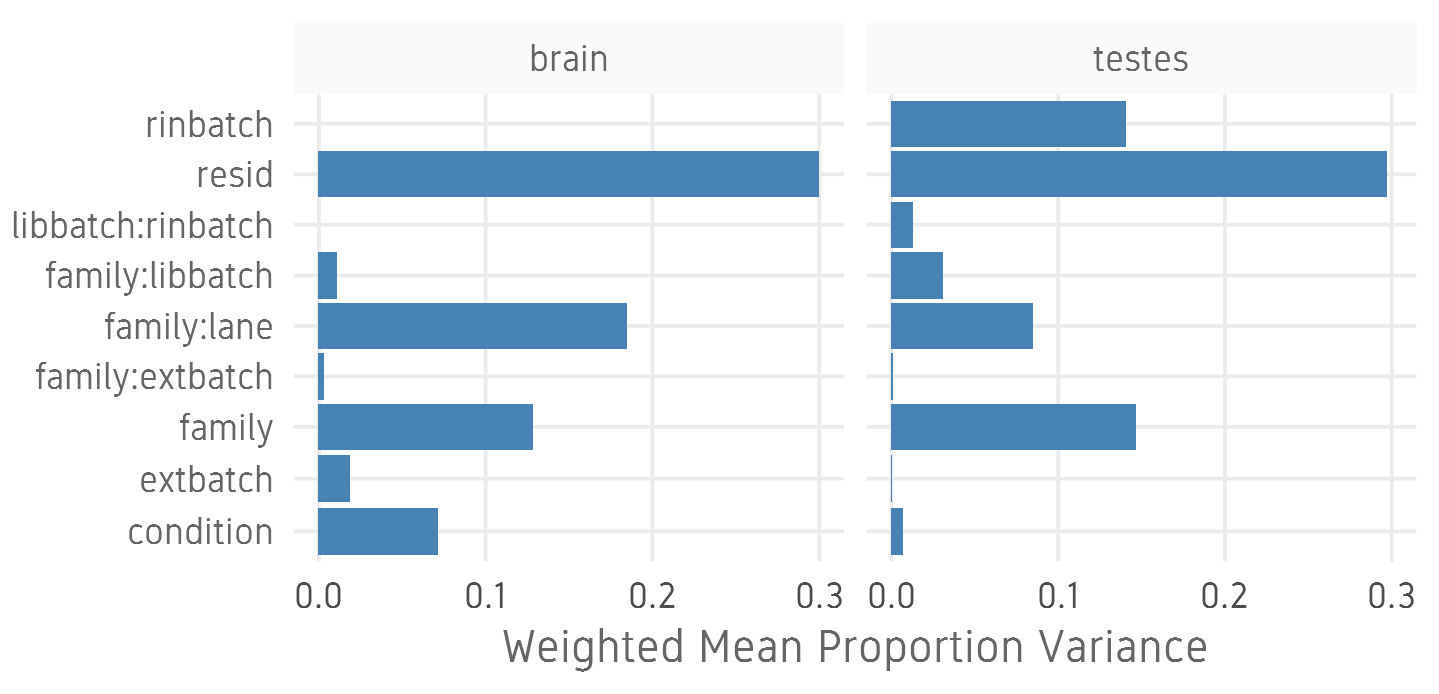
Differential expression
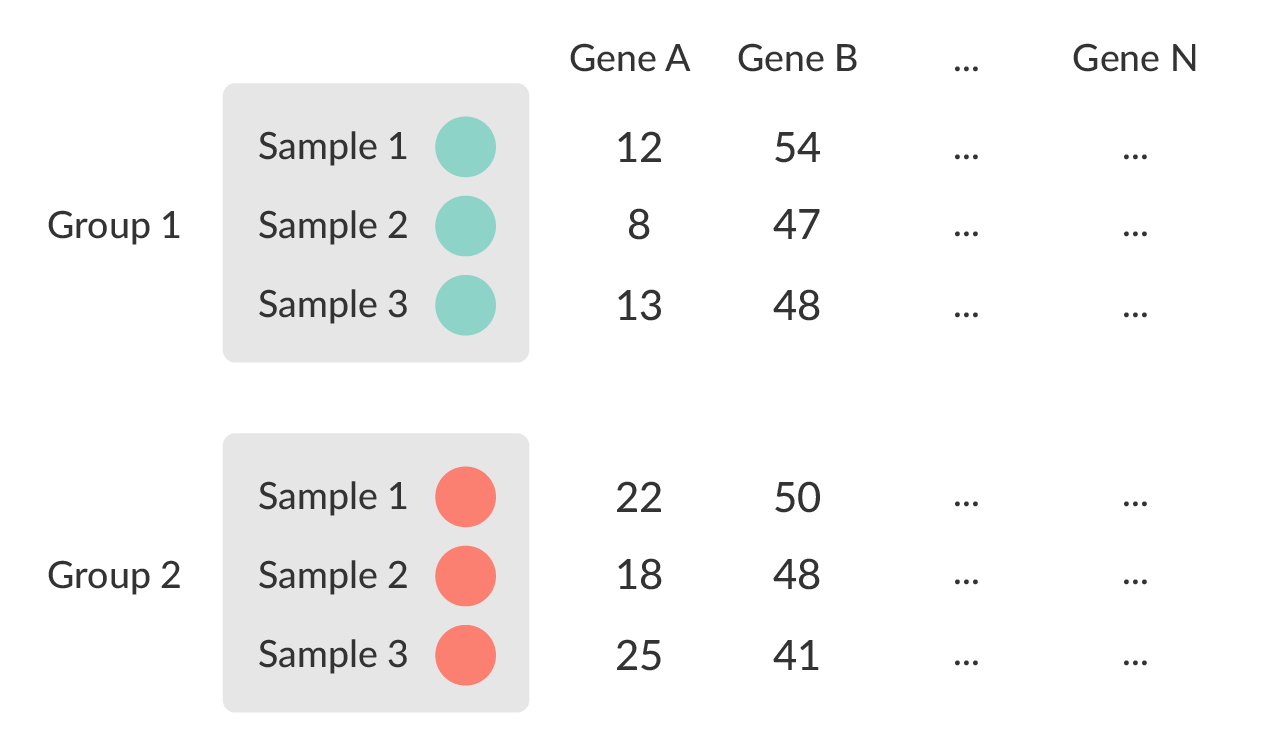
- Univariate testing gene-by-gene
- More descriptive, less predictive
Differential expression
- DESeq2, edgeR (Neg-binom > GLM > Test)
- Limma-Voom (Neg-binom > Voom-transform > LM > Test)
- DESeq2
~age+condition- Estimate size factors
estimateSizeFactors() - Estimate gene-wise dispersion
estimateDispersions() - Fit curve to gene-wise dispersion estimates
- Shrink gene-wise dispersion estimates
- GLM fit for each gene
- Wald test
nbinomWaldTest()
- Estimate size factors
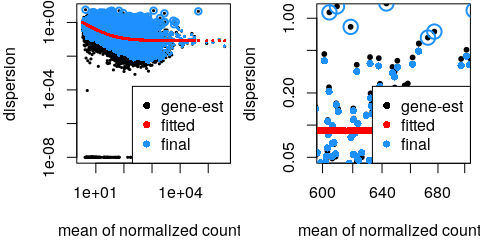
DGE
- Results
results()
log2 fold change (MLE): type type2 vs control
Wald test p-value: type type2 vs control
DataFrame with 1 row and 6 columns
baseMean log2FoldChange lfcSE
<numeric> <numeric> <numeric>
ENSG00000000003 242.307796723287 -0.932926089608546 0.114285150312285
stat pvalue padj
<numeric> <numeric> <numeric>
ENSG00000000003 -8.16314356729037 3.26416150242775e-16 1.36240609998527e-14- Summary
summary()
out of 17889 with nonzero total read count
adjusted p-value < 0.1
LFC > 0 (up) : 4526, 25%
LFC < 0 (down) : 5062, 28%
outliers [1] : 25, 0.14%
low counts [2] : 0, 0%
(mean count < 3)DGE
- MA plot
plotMA()
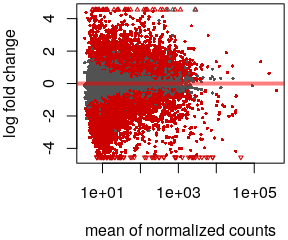
- Volcano plot
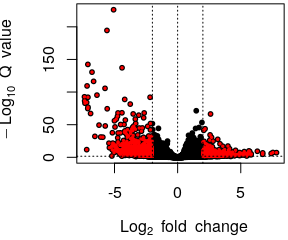
- Normalised counts
plotCounts()
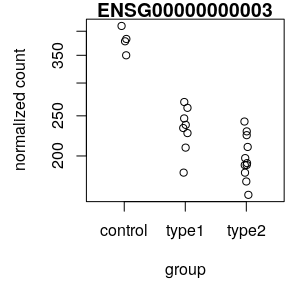
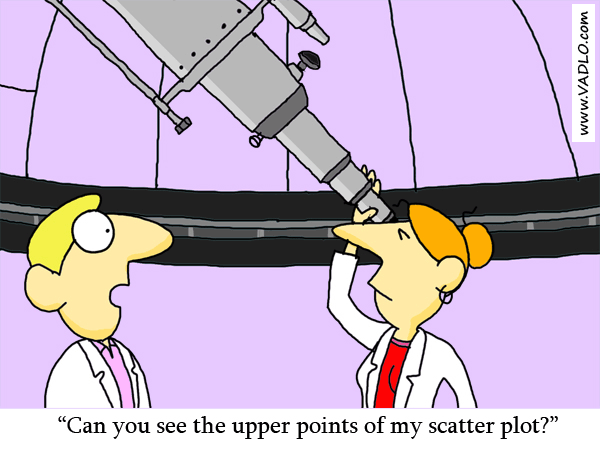
Functional analysis • GO
- Gene set analysis (GSA)
- Gene set enrichment analysis (GSEA)
- Gene ontology / Reactome databases
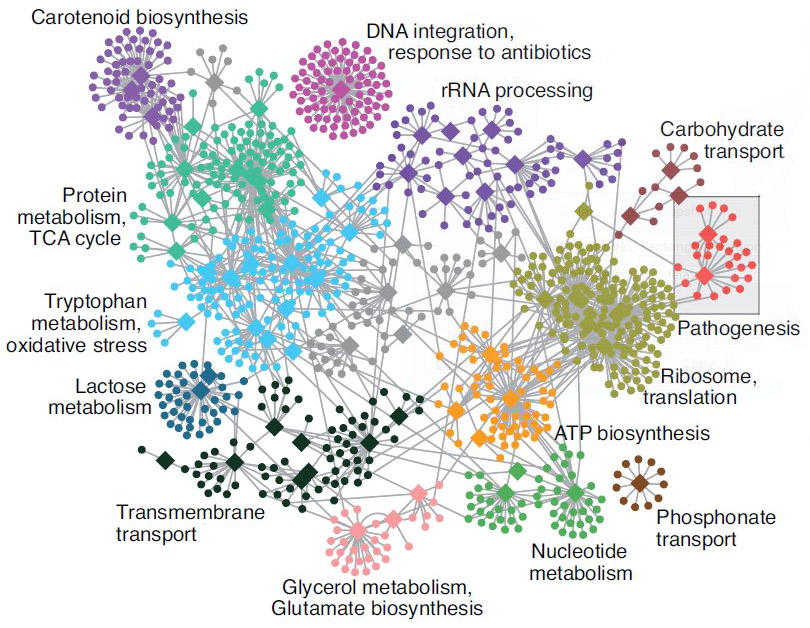
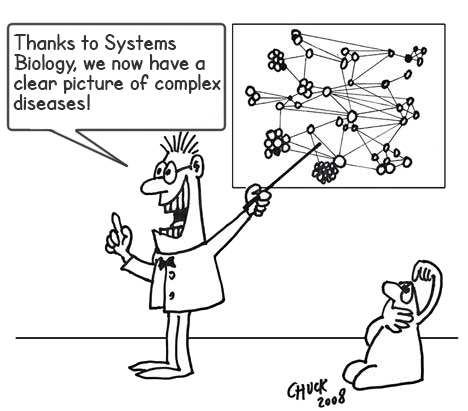
Functional analysis • Kegg
- Pathway analysis (Kegg)
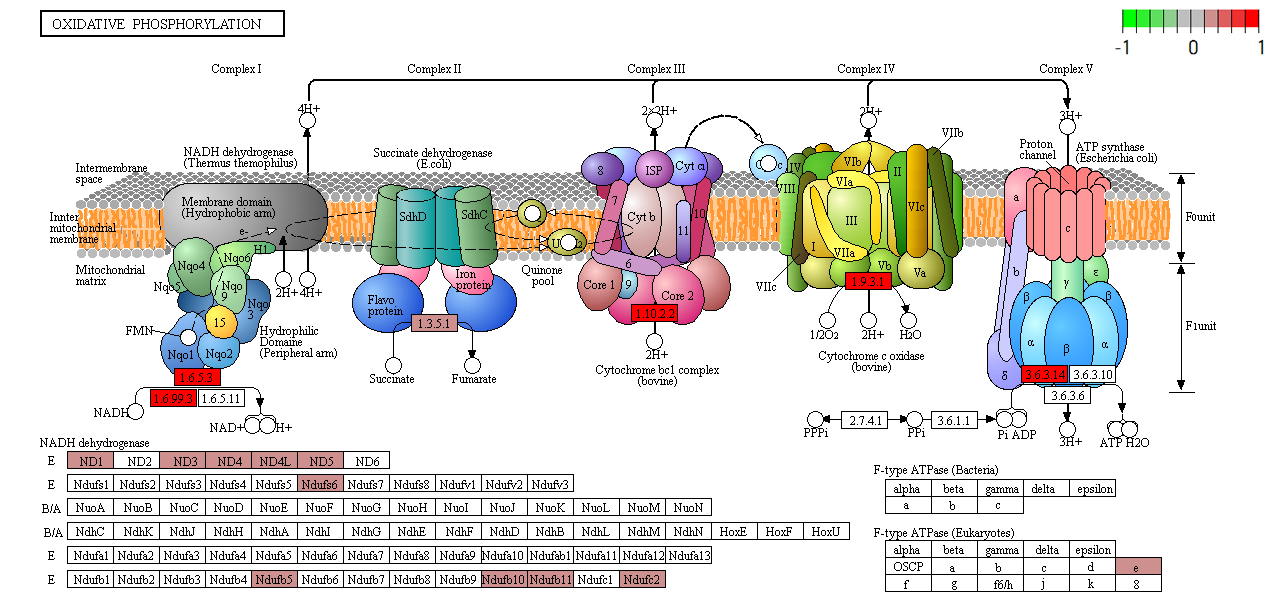
Summary
- Sound experimental design to avoid confounding
- Plan carefully about lib prep, sequencing etc based on experimental objective
- For DGE, biological replicates may be more important than other considerations (paired-end, sequencing depth, long reads etc)
- Discard low quality bases, reads, genes and samples
- Verify that tools and methods align with data assumptions
- Experiment with multiple pipelines and tools
- QC! QC everything at every step
Conesa, A., Madrigal, P., Tarazona, S., Gomez-Cabrero, D., Cervera, A., McPherson, A., … & Mortazavi, A. (2016). A survey of best practices for RNA-seq data analysis. Genome biology, 17(1), 1-19.
Further learning
- Griffith lab RNA-Seq using HiSat & StringTie tutorial
- HBC Training DGE using DeSeq2 tutorial
- Hemberg lab scRNA-Seq tutorial
- RNA-Seq Blog
- SciLifeLab courses

Thank you. Questions?
References
Hands-On tutorial
Main exercise
- 01 Check the quality of the raw reads with FastQC
- 02 Map the reads to the reference genome using HISAT2
- 03 Assess the post-alignment quality using QualiMap
- 04 Count the reads overlapping with genes using featureCounts
- 05 Find differentially expressed genes using DESeq2 in R
Bonus exercises
- 01 Functional annotation of DE genes using GO/Reactome/Kegg databases
- 02 RNA-Seq figures and plots using R
- 03 Visualisation of RNA-seq BAM files using IGV genome browser
Data: /sw/courses/ngsintro/rnaseq/
Work: /proj/naiss2023-22-862/nobackup/user/rnaseq/
Hands-On tutorial
- Course data directory
/sw/courses/ngsintro/rnaseq/
rnaseq/
+-- bonus/
| +-- assembly/
| +-- exon/
| +-- funannot/
| +-- plots/
+-- documents/
+-- main/
+-- 1_raw/
+-- 2_fastqc/
+-- 3_mapping/
+-- 4_qualimap/
+-- 5_dge/
+-- 6_multiqc/
+-- reference/
| +-- mouse_chr19_hisat2/
+-- scripts/- Your work directory
/proj/naiss2023-22-862/nobackup/user/rnaseq/
[user]/
rnaseq/
+-- 1_raw/
+-- 2_fastqc/
+-- 3_mapping/
+-- 4_qualimap/
+-- 5_dge/
+-- 6_multiqc/
+-- reference/
| +-- mouse_chr19_hisat2/
+-- scripts/
+-- funannot/
+-- plots/